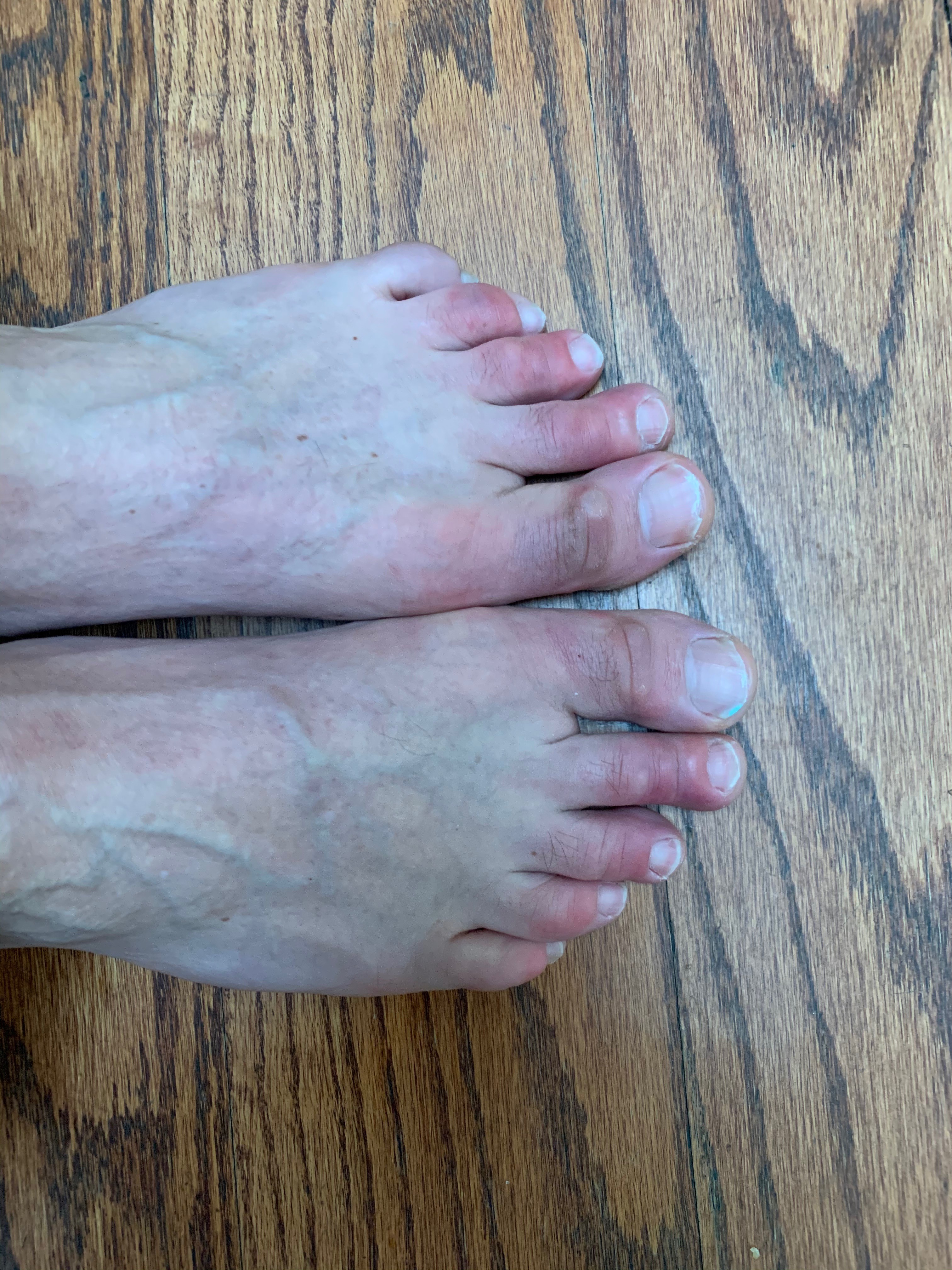


Jennifer Middleton, MD, MPH
Posted on April 27, 2020
Anecdotal reports are emerging of patients with COVID-19 presenting with purplish patches on their toes. Sometimes, these findings are the only sign of otherwise asymptomatic COVID-19, and sometimes they are the initial presenting sign in advance of fever and upper respiratory symptoms. These skin findings (more details here and here) look remarkably similar to pernio (chilblains):
 |
| Purple discoloration of "COVID toes" (source) |
As described in this 2019 AFP article on "Hypothermia and Cold Weather Injuries," pernio is a "nonfreezing injury characterized by localized inflammatory lesions that most commonly affect the hands or feet within 24 hours of exposure to damp environments....Lesions may persist for weeks to months before resolving spontaneously." Some dermatologists hypothesize that the immune response to the SARS-CoV-2 virus may contribute to an inflammatory response that mimics pernio. Another theory posits that these lesions are the result of small blood clots, noting that SARS-CoV-2 infection has been linked with elevated D-dimer levels and microvascular clots in other organs; 31% of patients with COVID-19 from one intensive care unit in the Netherlands had a thrombotic complication such as a pulmonary embolism, stroke, or myocardial infarction.
None of these "COVID toes" reports have been formally published yet, but the American Academy of Dermatology has a registry to report skin manifestations of COVID-19. Family physicians presented with a chief complaint of skin changes in the feet or hands may wish to consider COVID-19 infection on their differential. We still have much to learn about SARS-CoV-2, and no organ system seems to have been spared across the spectrum of patients with COVID-19 illness. As our collective understanding continues to evolve, you can access a wealth of COVID-19 resources at the top of the AFP website, including research briefs, published articles from FPM and the Annals of Family Medicine, and AAFP CME opportunities.
Sign up to receive twice monthly emails from AFP. You'll get the AFP Clinical Answers newsletter around the first of the month and the table of contents mid-month, shortly before each new issue of the print journal is published.
Disclaimer
The opinions expressed here are those of the authors and do not necessarily reflect the opinions of the American Academy of Family Physicians or its journals. This service is not intended to provide medical, financial, or legal advice. All comments are moderated and will be removed if they violate our Terms of Use.